Our Blog - Normandy 2023 - Le Havre, France
About the only thing we knew about Le Havre before this trip was that it was destroyed (pretty much totally) during WWII. We decided it was worth a bit of a drive to see the city. The name means "the harbor", and it is a major port city on the North coast of France.
The city and port were founded by King Francis I in 1517. Economic development in the Early modern period was hampered by religious wars, conflicts with the English, epidemics, and storms. It was from the end of the 18th century that Le Havre started growing and the port took off first with the slave trade then other international trade.
The city looks very different than most French cities because after it was almost totally destroyed during WWII, a city planner drew out a totally new city. Many of the buildings have the same architecture using pre-cast concrete modular frames and straight lines. In one of the churches, they had some pictures of the city after the bombing raids of WWII and I thought they did a good job of showing the extent of the destruction. Around 80% of the city was destroyed.
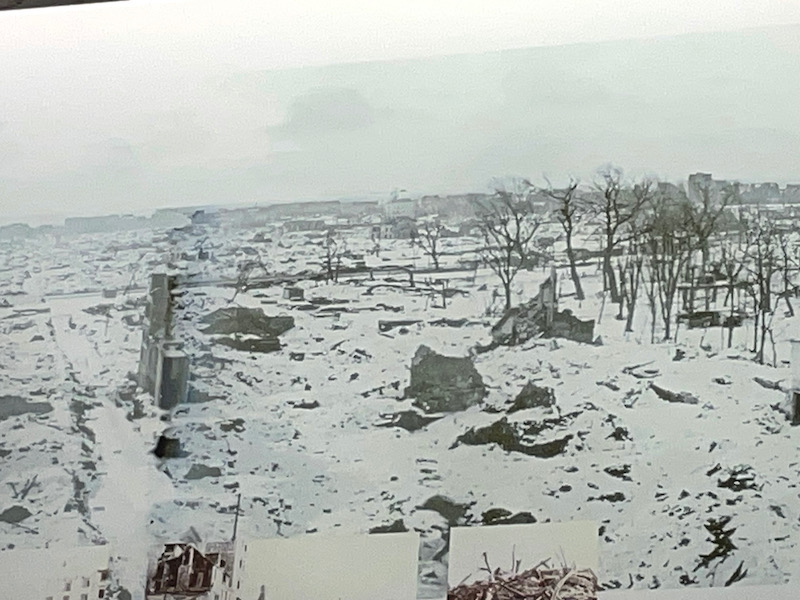
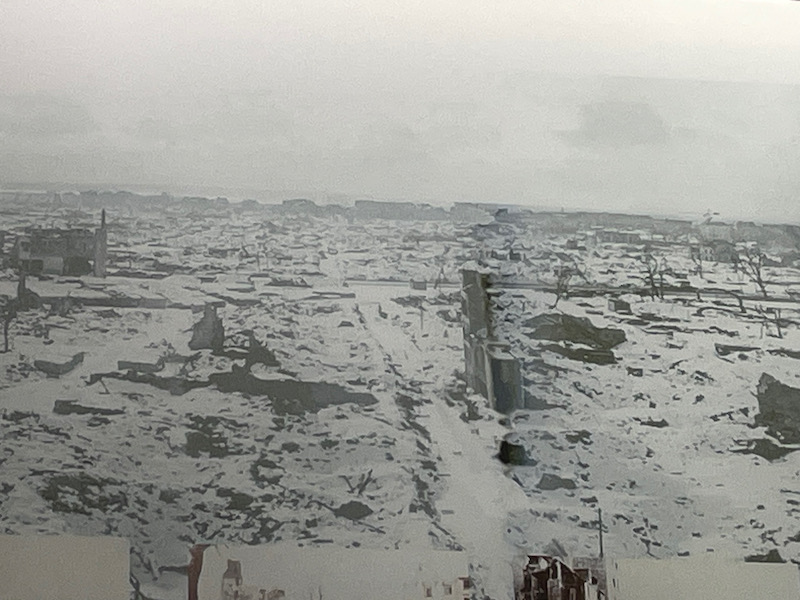
We parked near a statue of François I, who founded the city. This one was created in 1945 to replace an earlier bronze statue was thought to have been melted down by the Germans to make munitions during WWII. The actual bronze statue was, in fact, hidden and is now in the lobby of the city hall.
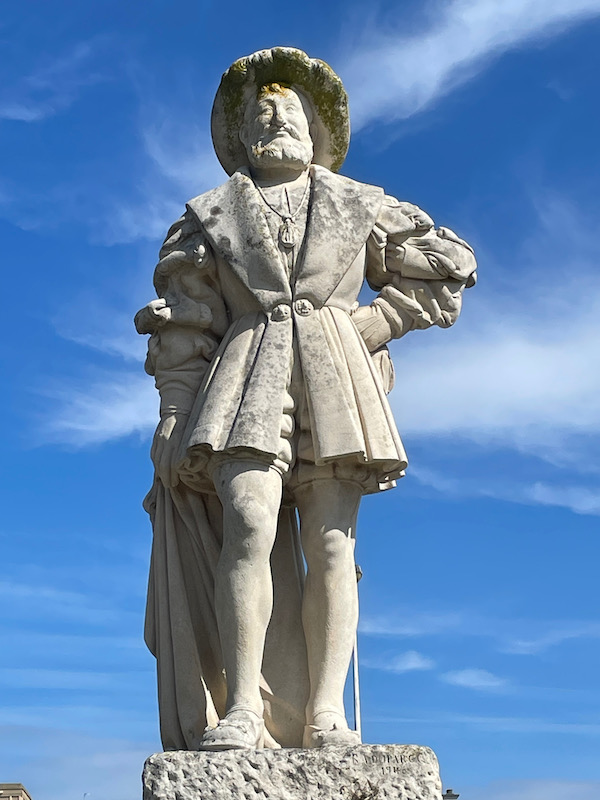
Here you can see one of the many small basins of water, and behind this. one is the larger English Channel basin, where the Brittany Ferries from Portsmouth dock.
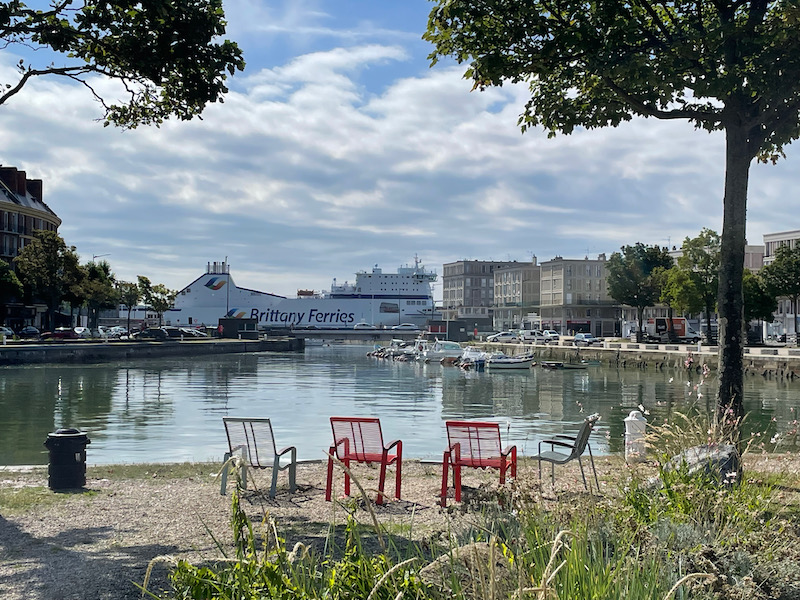
Hôtel Dubocage de Bléville was a private mansion with 3 floors and a mansard roof. The various materials of the main façade are slate, in cladding and roofing, black flint, brick and Caen stone. There are lots of windows (more than 20 on the front) to try to bring in as much light as possible. It is currently a museum that has a special exhibit this year on the slave trade (hence the boat in front). You will also see that, on the right-hand section of the house, the front façade is covered with roofing tiles (or what looks like that). We have seen this quite a bit up in Normandy.
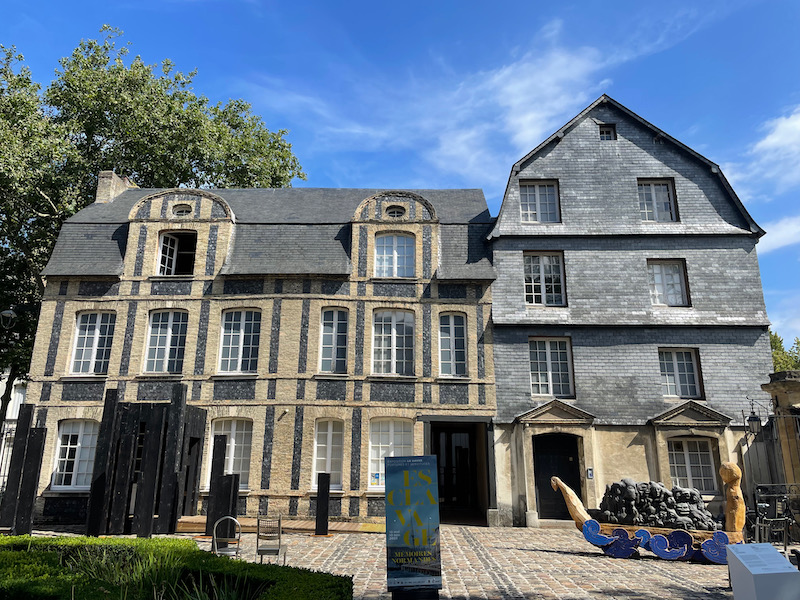
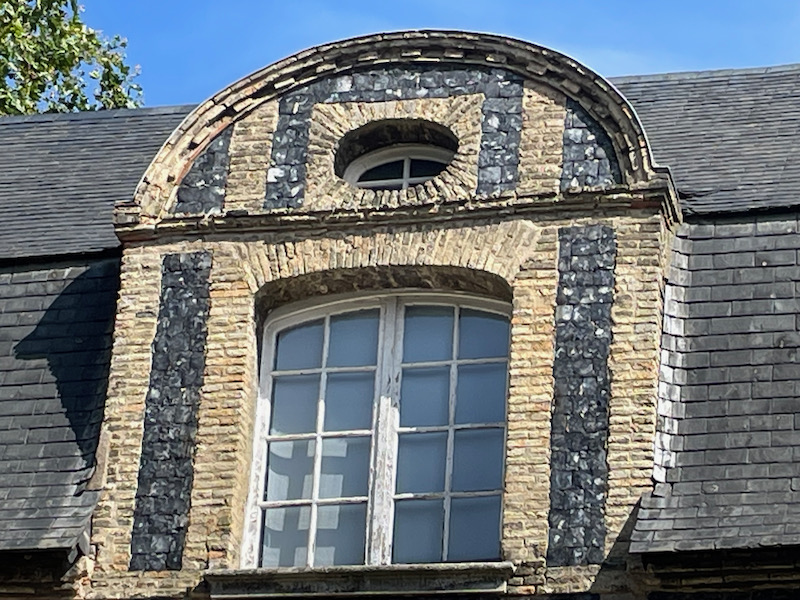
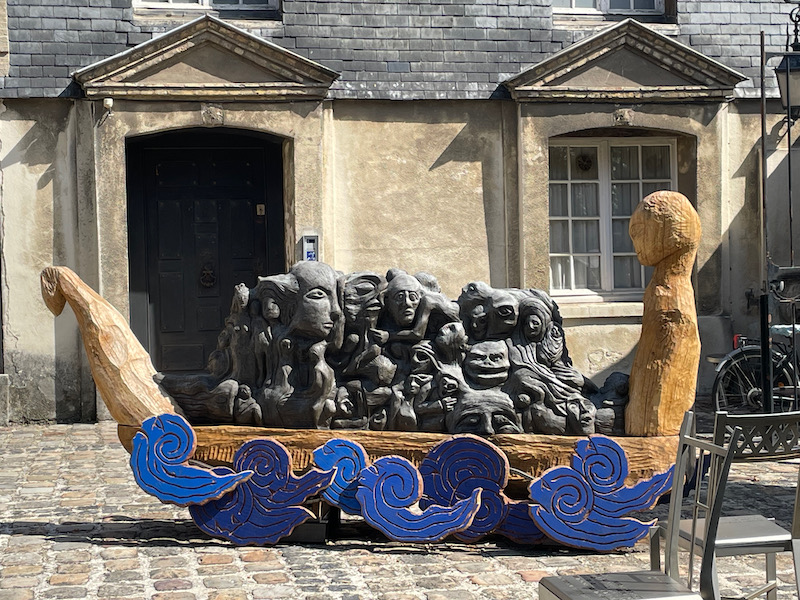
To mark Le Havre’s 500th anniversary celebrations, the "Catène de Containers" art installation was created in 2017. It is made up of brightly colored shipping containers stacked in two arches and has become one of the most photographed landmarks in the city.
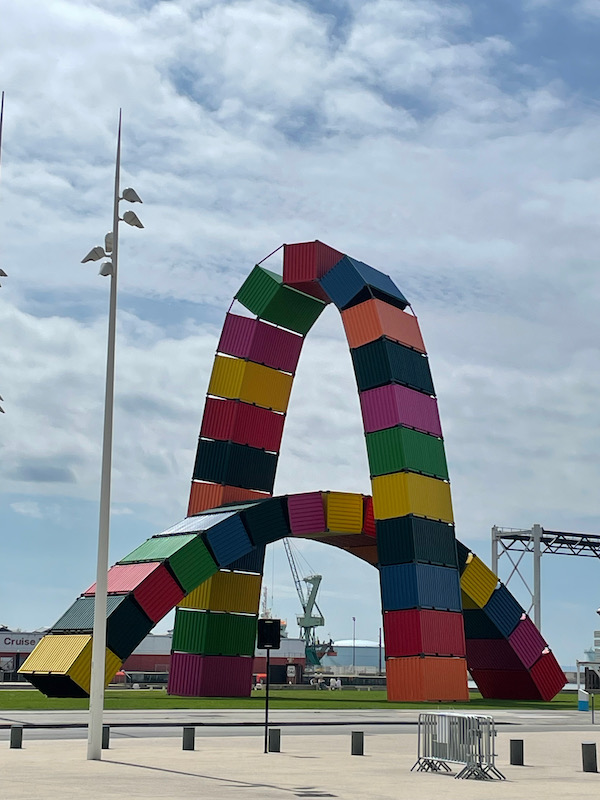
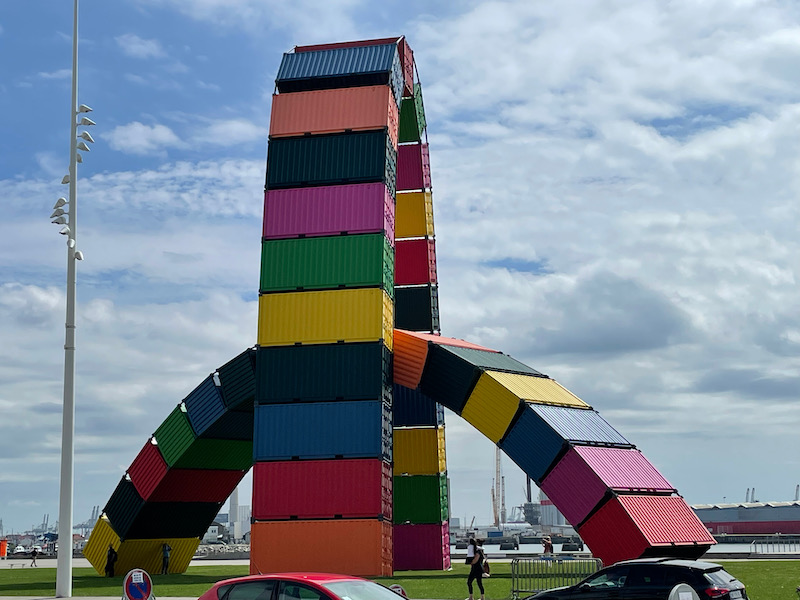
So, this is typical of many of the apartment buildings in the main part of the city. They are relatively simplistic and rectangular, but one thing did hit me. This is purely my own thoughts, I didn't find any information about the design. To me, these are attempting to be "Haussmannian" but not really. There are 5 floors (very Haussmannian) and while this building didn't have any, some of the buildings had stores on the ground floor. The next floor up (called the mezzanine) had lower ceilings and here you can see that the window is smaller. The next floor up was the "upper class" floor and here you can see that it is the only floor with a balcony. The top 2 floors have the same windows, but no actual balcony.
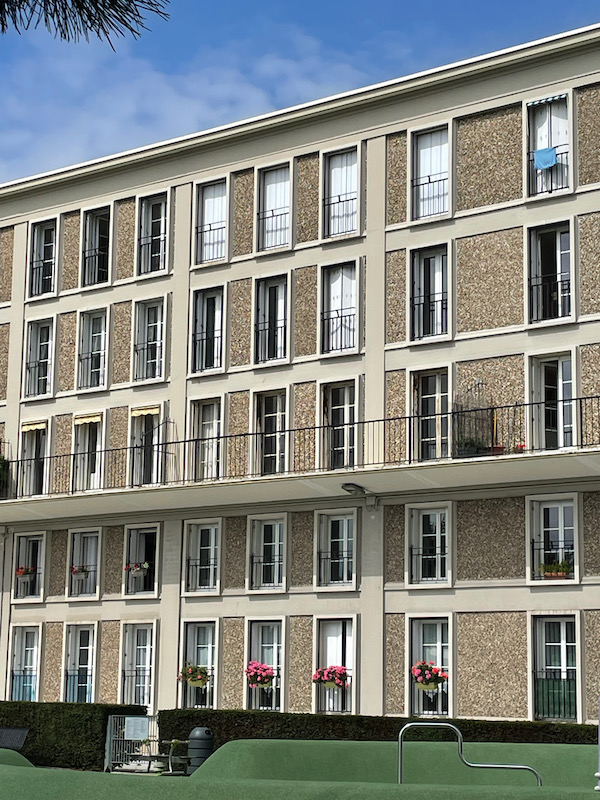
St Joseph's Church was part of the "new plan" for the city and was built between 1951 and 1958. The church's single, central tower dominates the city skyline, easily visible from the port. The idea behind the design is that the building resembles a lantern or lighthouse, which is what you would find on a port. The church itself wasn't very interesting ... the only notable thing here is the stained-glass. The artist uses 7 colors which go from vibrant colors on the bottom towards white at the top, symbolizing a rising movement "towards God".
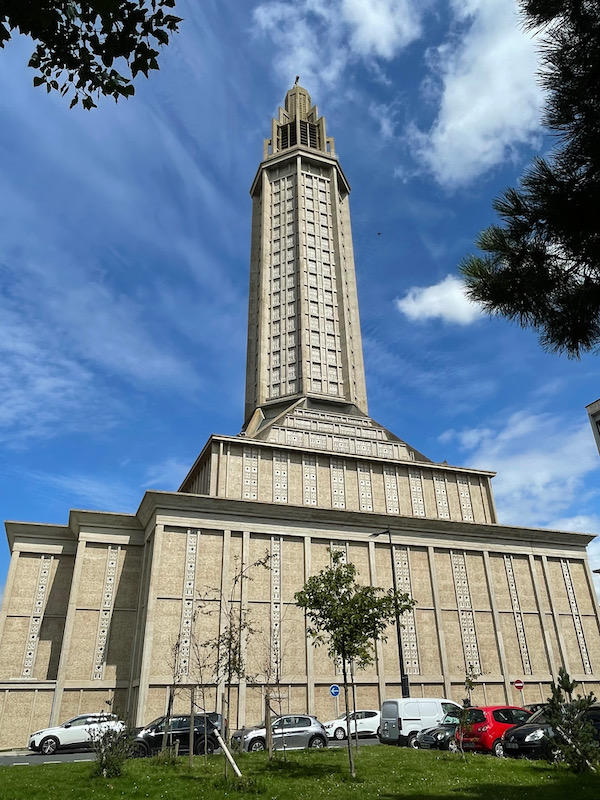
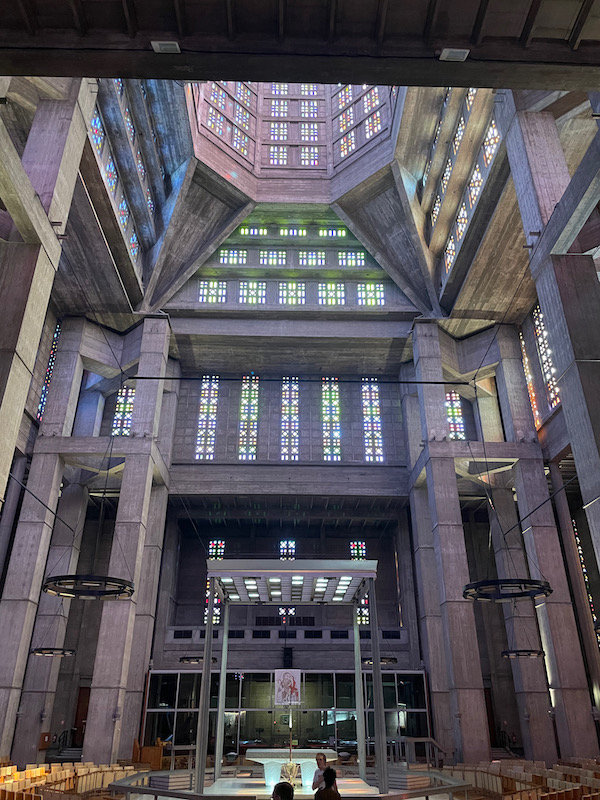
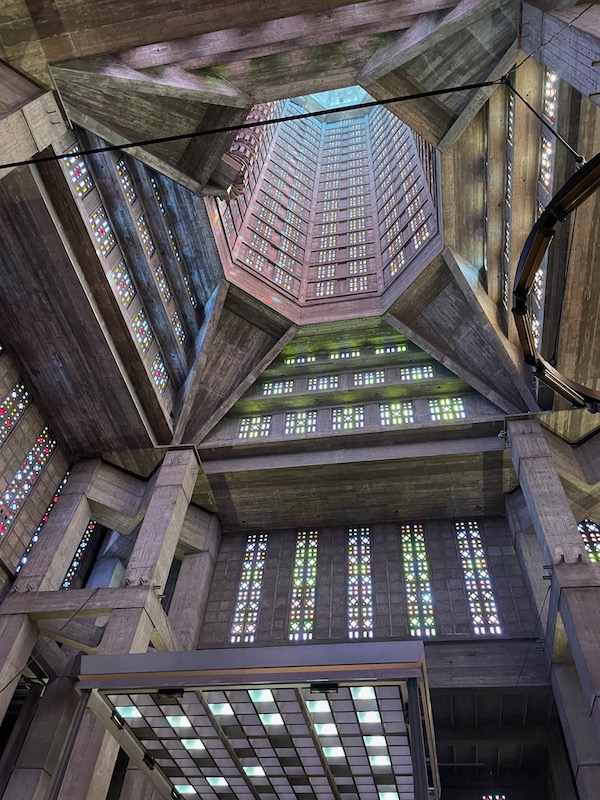
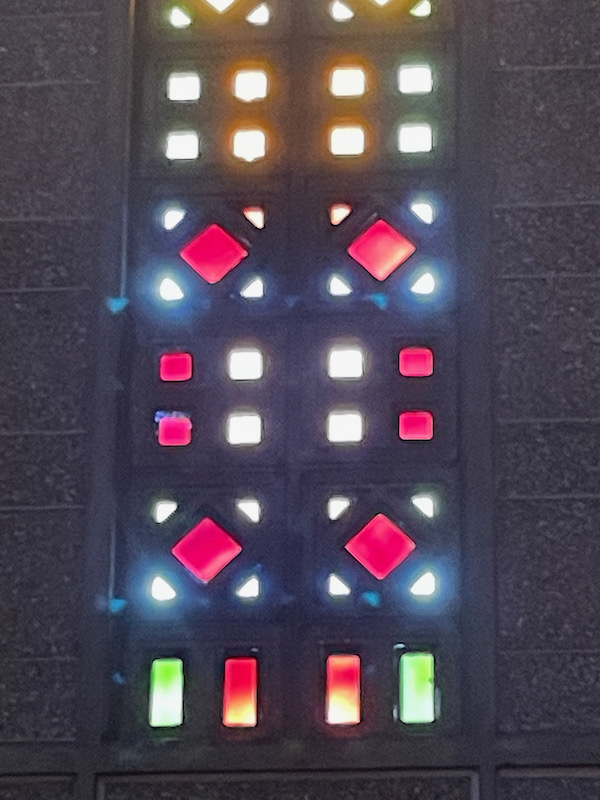
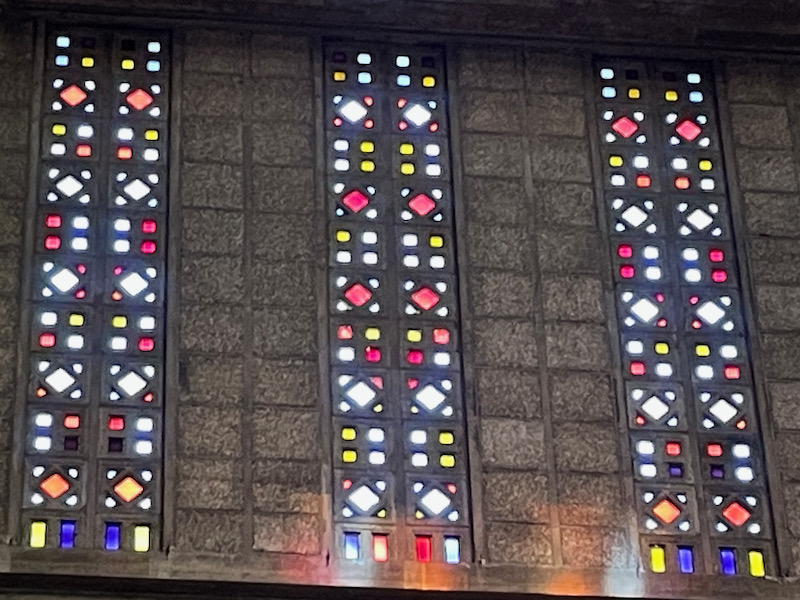
Just off the port is the Maison de l'Armateur, which translates literally to the shipowner's house. It has been home to many ship owners over the year since the late 18th century when it was built, including a merchant from one of the largest families of slave shipowners in the city. It is one of the few buildings that was not destroyed during the 1944 bombings. The façade is based on the style of Louis XVI with 5 levels: a ground floor (stables and warehouse), a mezzanine, two floors and an attic.
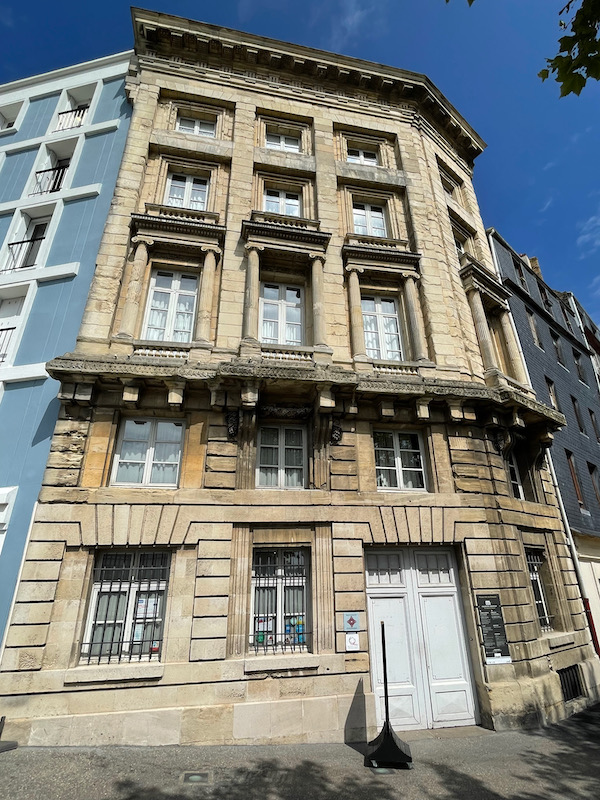

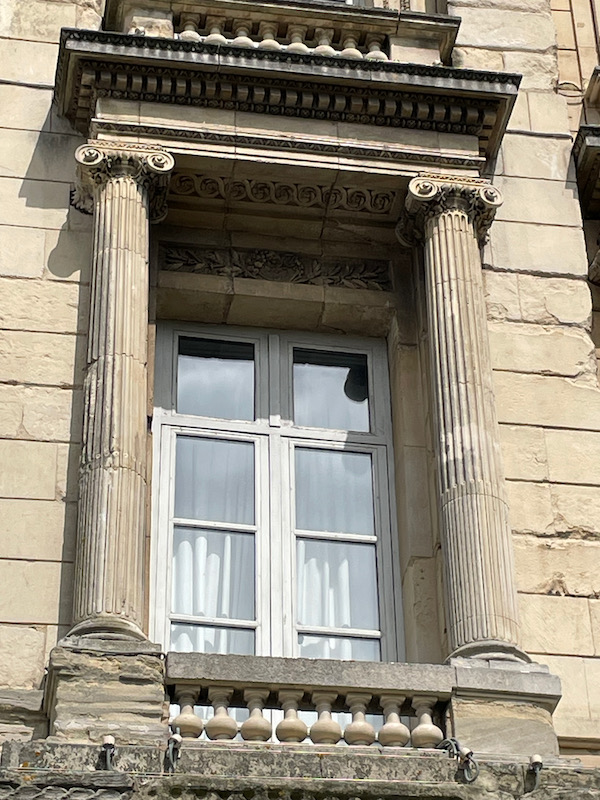
Notre-Dame-de-Grâce Cathedral is another one of the very few buildings in the city centre to have survived the devastation of World War II. The main building of the church was constructed between 1575 and 1638. The has two side facades and doorways are in Renaissance/Classical styles, while the main façade is in baroque/Classical style. We started at the back and worked our way around, and the look of the back and sides is quite different than the front. There are several bas-reliefs on the main facade, including this one with angels playing the trumpet.

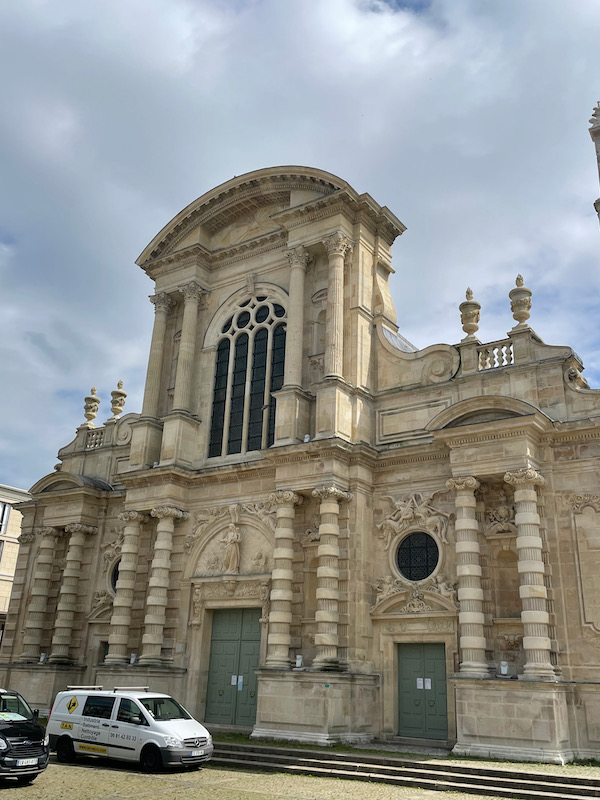
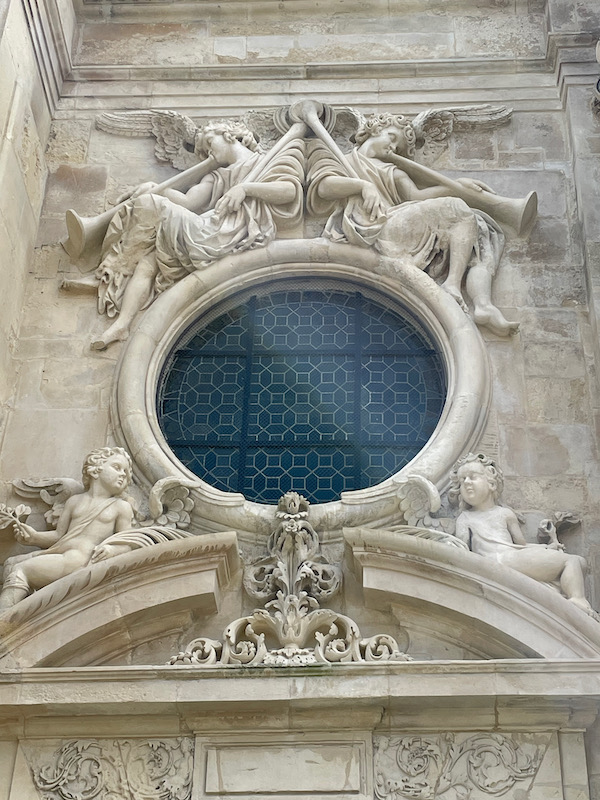
The bell tower, the oldest part of the cathedral, was erected around 1540. It was damaged by the bombings and you can still see some of the damage on the walls.
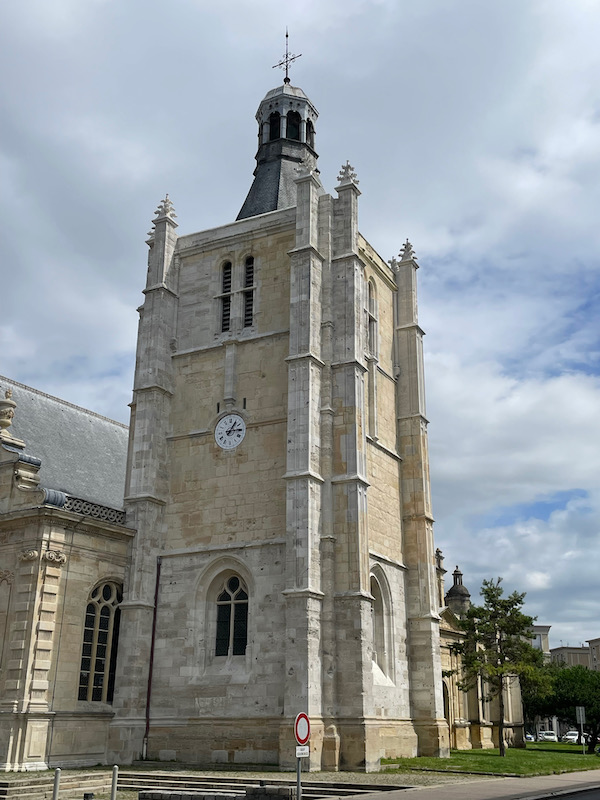
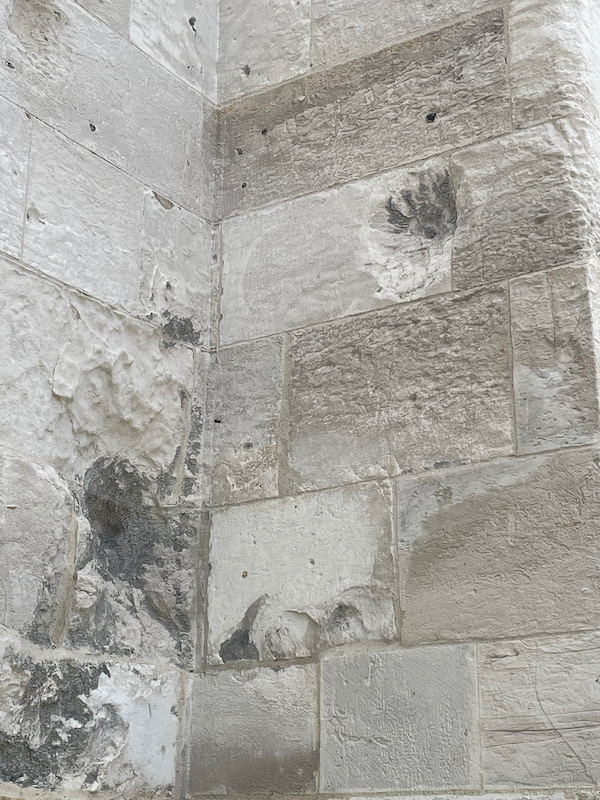
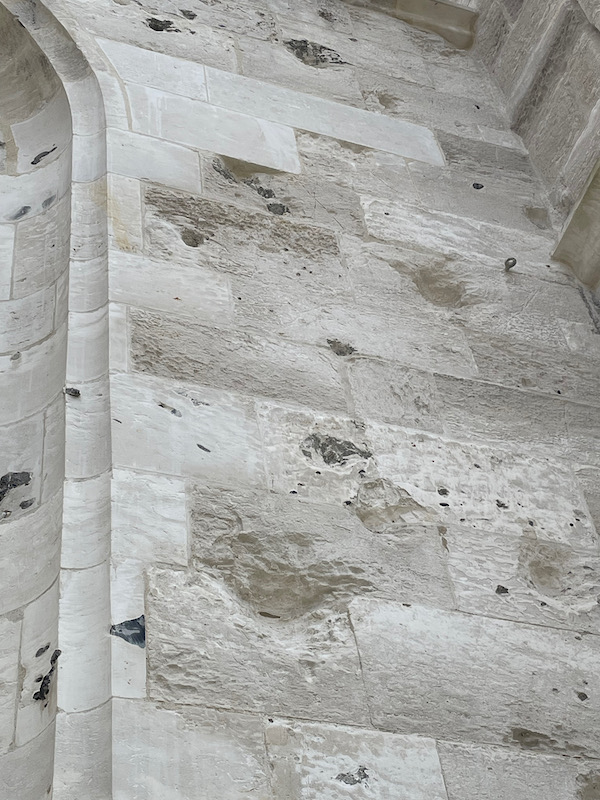
Unfortunately, it wasn't open while we were there so there are no interior pictures.